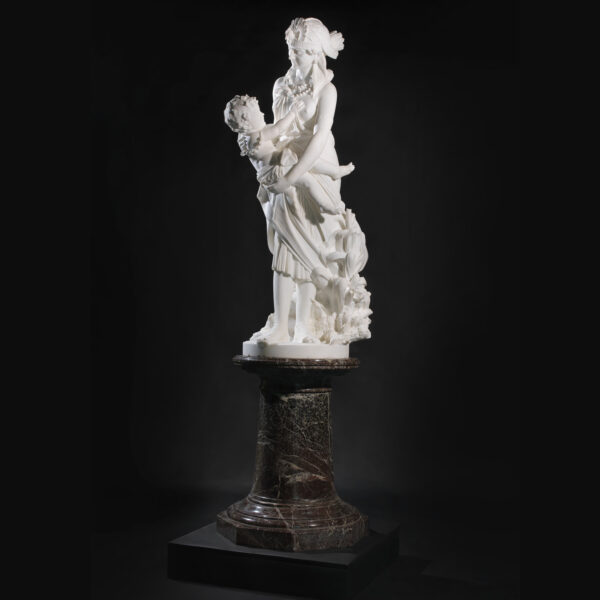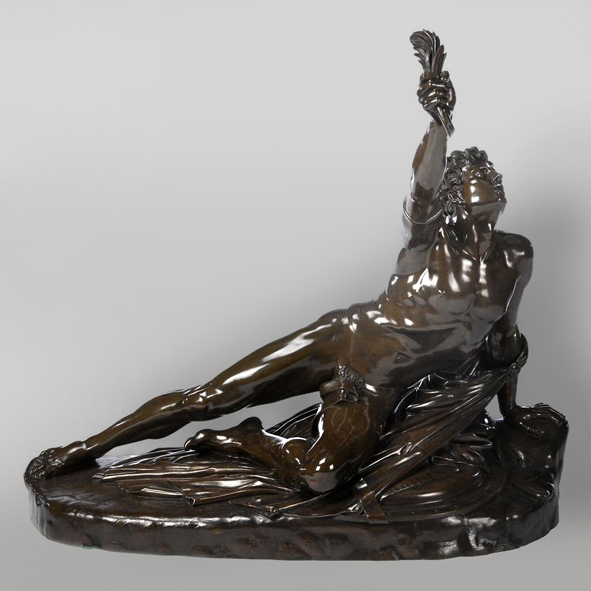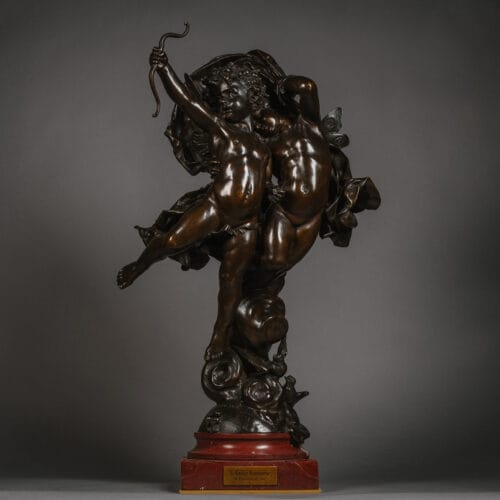Луис Эрнест Барриас
A Patinated Bronze Figure of Jeanne d’Arc, Cast by Susse Frères
£34,000
A Large Patinated Bronze Figure of ‘Jeanne d'Arc Prisonnière’ (‘Prisoner Joan of Arc’), By Louis-Ernest Barrias (French, 1841–1905). Joan...
Размеры
Height: 110 cm (44 in)Width: 28 cm (12 in)
Глубина: 37 см (15 дюймов)
Описание
A Large Patinated Bronze Figure of ‘Jeanne d’Arc Prisonnière’ (‘Prisoner Joan of Arc’), By Louis-Ernest Barrias (French, 1841–1905).
Joan of Arc modelled standing, in handcuffs and armour and wearing a Bascinet helmet.
Signed ‘E. Barrias’ and with foundry mark ‘Susse Fres Edit Paris’, Stamped ‘PS’.
Titled on the base: ‘Vous avez pu m’enchainer/vous n’enchainerez jamais la Fortune de la France/Jeanne d’Arc’ (‘You were able to chain me but you will never chain the will of France. Joan of Arc’).
Cast as part of a limited edition by the Susse Frères foundry, Paris, from the model by Louis-Ernest Barrias (French, 1841 – 1905). The model conceived Circa 1891 and Cast Circa 1910.
In 1891 Barrias completed his touching life-size portrait of ‘Jeanne d’Arc devant ses judges’ (‘Joan of Arc before the judges’) in marble for her monument at the Church of Bon Secours in Rouen, where she had been found guilty of heresy and executed by burning at the stake in 1431. That statue was exhibited at the Paris Salon in 1892 (no. 2257) and was cast in bronze by Susse Frères as listed in their 1905 catalogue.
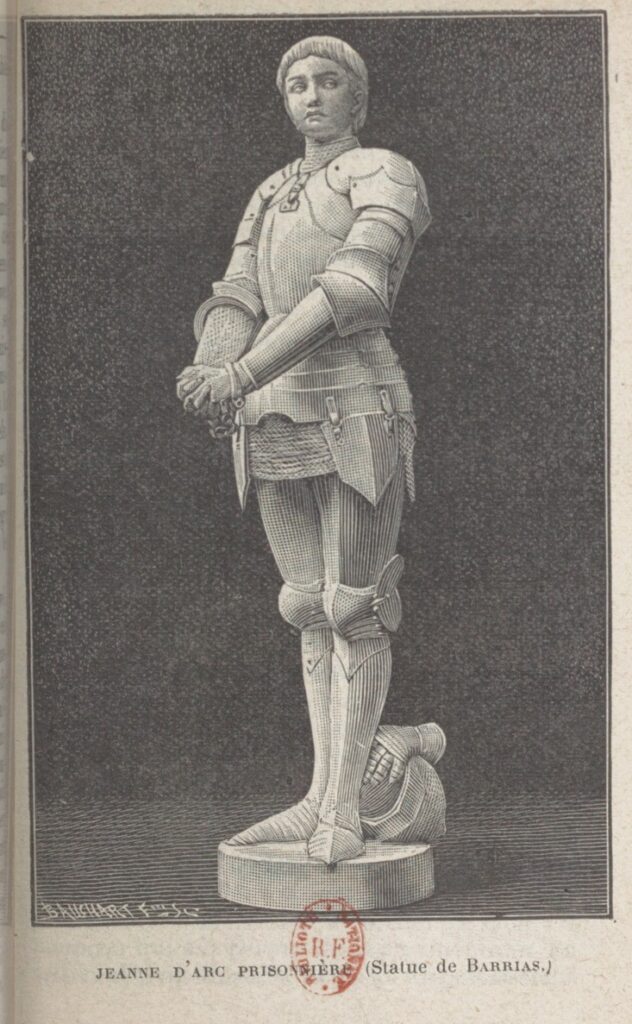
‘Joan of Arc before the judges’ completed by Barrias in 1891 for her monument at the Church of Bon Secours in Rouen.
It shows Joan of Arc bareheaded, whereas Barrias returned to the subject, remodelling it to show her wearing a Bascinet helmet with the visor raised. The reworked version is entitled ‘Jeanne d’Arc Prisonnière’ (‘Prisoner Joan of Arc’) and was produced by Susse Frères as a bronze edition appearing in their 1910 catalogue.
Barrias was seemingly inspired to make this change with reference to a 15th century stone head of a statue of Saint-Maurice thought to be have been modelled after Jeanne d’Arc, which had been discovered in 1827 in the ruins of the church of St-Maurice-St-Éloi in Orléans. It was for a long time speculated to be a lifetime portrait of Joan of Arc and shows a feminine face with downcast eyes beneath a Bascinet helmet. Barrias accordingly references this by remodelling his statue by revising the head, adding the helmet and altering her expression to better capture the pathos of the subject. In this, his second version of Joan of Arc, Barrias is all the more triumphant in his depiction of the national heroine of France, capturing with remarkable realism the defiance and contempt with which she stares down her jailers.
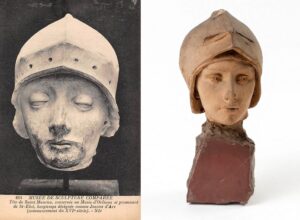
(left) head of a statue, which is the subject of much debate as to whether it depicts Joan of Arc, and inspired Barrias to sculpt this clay model (right) which he repurposed for his revised statue of ‘Jeanne d’Arc Prisonnière’ for Susse Frères Foundry.
Barrias’ sculpting of Joan of Arc is part of a cultural reassessment of her legacy during the nineteenth century which culminated in her being canonised as a Saint in the Roman Catholic Church on 16 May 1920 by Pope Benedict XV. Joan of Arc’s heroism and martyrdom by her Burgundian captors at the behest of the English made her the subject of multiple historical and romantic cultural depictions, especially in the nineteenth century, beginning with Friedrich Schiller’s 1801 play ‘The Maid of Orleans’, which inspired countless different dramatic works including operatic adaptations by Verdi and Tchaikovsky.
Famously Joan of Art declared that she was sent from heaven to repel the invading English, and her reputation as a military leader and symbol of France became particularly relevant after France’s defeat in the Franco-Prussian War of 1870, when Joan became a rallying point for a new crusade to reclaim Lorraine, the province of her birth. During the French Third Republic (1870-1940) the 30th May was a patriotic civic holiday in her honour. In art, Joan is depicted wearing armour as early as the 1450s and famously in ‘Joan of Arc at Prayer’ by Peter Paul Rubens in 1620.
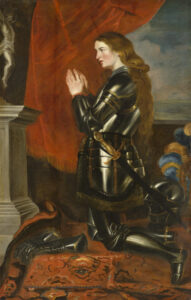
Joan of Arc, workshop of Peter Paul Rubens. The North Carolina Museum of Art (Object No. 52.9.111).
By the nineteenth century, the subject of Joan of Arc became a mainstay at the Paris Salon, and she was painted famously by Delaroche, Ingres and their circle, as well as internationally by Dillens, Rosetti and Millais to name but a few.
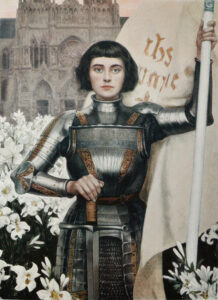
Illustration by Albert Lynch (1903, in Figaro Illustré magazine).
Particularly impressive are nineteenth century sculptural depictions, especially the equestrian statue of Joan of Arc by Emmanuel Frémiet in the Place des Pyramides, Paris, which was commissioned by the French state after the defeat of the Franco-Prussian War. The statue of Joan of Arc, the Saint, in Notre-Dame Cathedral in Paris by Charles Jean Desvergnes, completed in 1921, owes a great deal to Barrias’ definitive portrayal.
This bronze statue of ‘Jeanne d’Arc Prisonnière’ is a rare example of the largest 110 cm. high size cast by Susse Frères who also produced reduced versions of 73 / 51 / 31 / 21 cm high. The Susse Frères foundry exhibited a version in metal and ivory at the 1900 Exposition universelle.
Дата
Около 1900 года
Происхождение
Франция
Средний
Патинированная бронза
Подпись
Signed ‘E. Barrias’ and with foundry mark ‘Susse Fres Edit Paris', Stamped 'PS'.
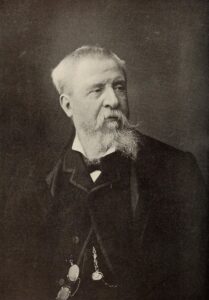
Louis-Ernest Barrias, c. 1899, (Wikipedia)
Louis-Ernest Barrias (1841 – 1905) was one of the most celebrated and influential sculptors of the late nineteenth century. Along with contemporaries such as Batholdi (of Statue of Liberty fame), he was influential in re-inventing a new sophisticated approach to allegorical representation, evident in the romantic figure of Nature Revealing Herself, but also in handling themes of modernity such as his Allegory to Electricity for the Gallery of Machines at the 1889 Exposition Universelle.
Born in Paris into a family of well known artists Louis-Ernest started his career as a painter. He studied under Léon Cogniet, before later taking up sculpture under Pierre-Jules Cavelier and following his admittance to the École des Beaux-Arts in Paris 1858, François Jouffroy. In 1865 Barrias won the Prix de Rome and was involved in the decoration of the Paris Opéra and the Hôtel de la Païva in the Champs-Élysées.
In 1878 he was made a Knight of the Legion of Honour, an officer in 1881, and a commander in 1900. Barrias replaced Dumont at the Institut de France in 1884 and succeeded Cavelier as professor at the École des Beaux-Arts.
G. Lafenestre, L’Oeuvre de Ernest Barrias, Paris. 1908. pp. 38 & 39.
Bronzes d’Art Ameublement Susse Frères Fondeurs-Editeurs,1905 Sales Catalogue, Paris, p. 1: ‘Jeanne d’Arc devant ses judges’ (‘Joan of Arc before the judges’), N.D. de Bon-Secours à
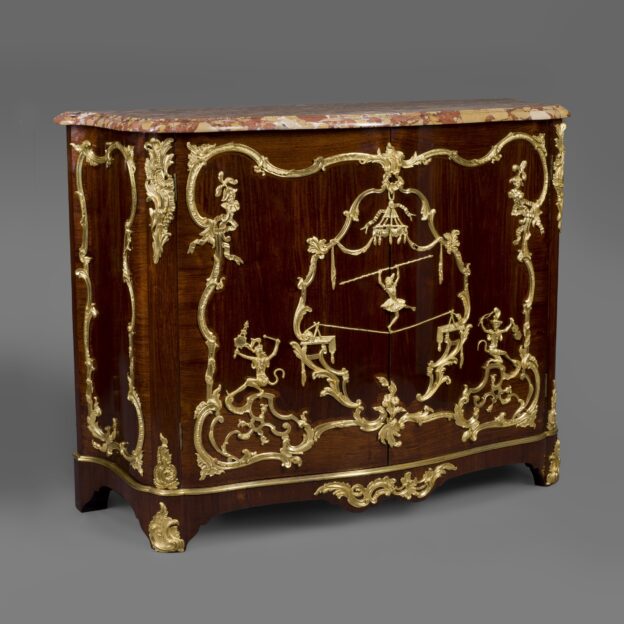




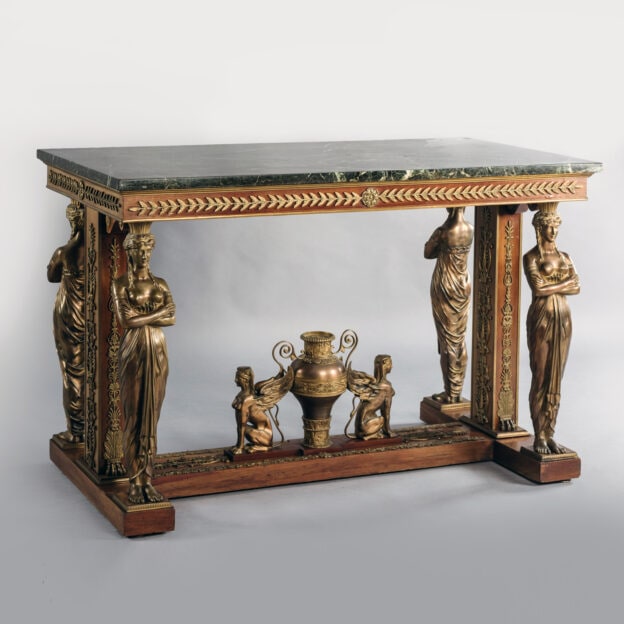
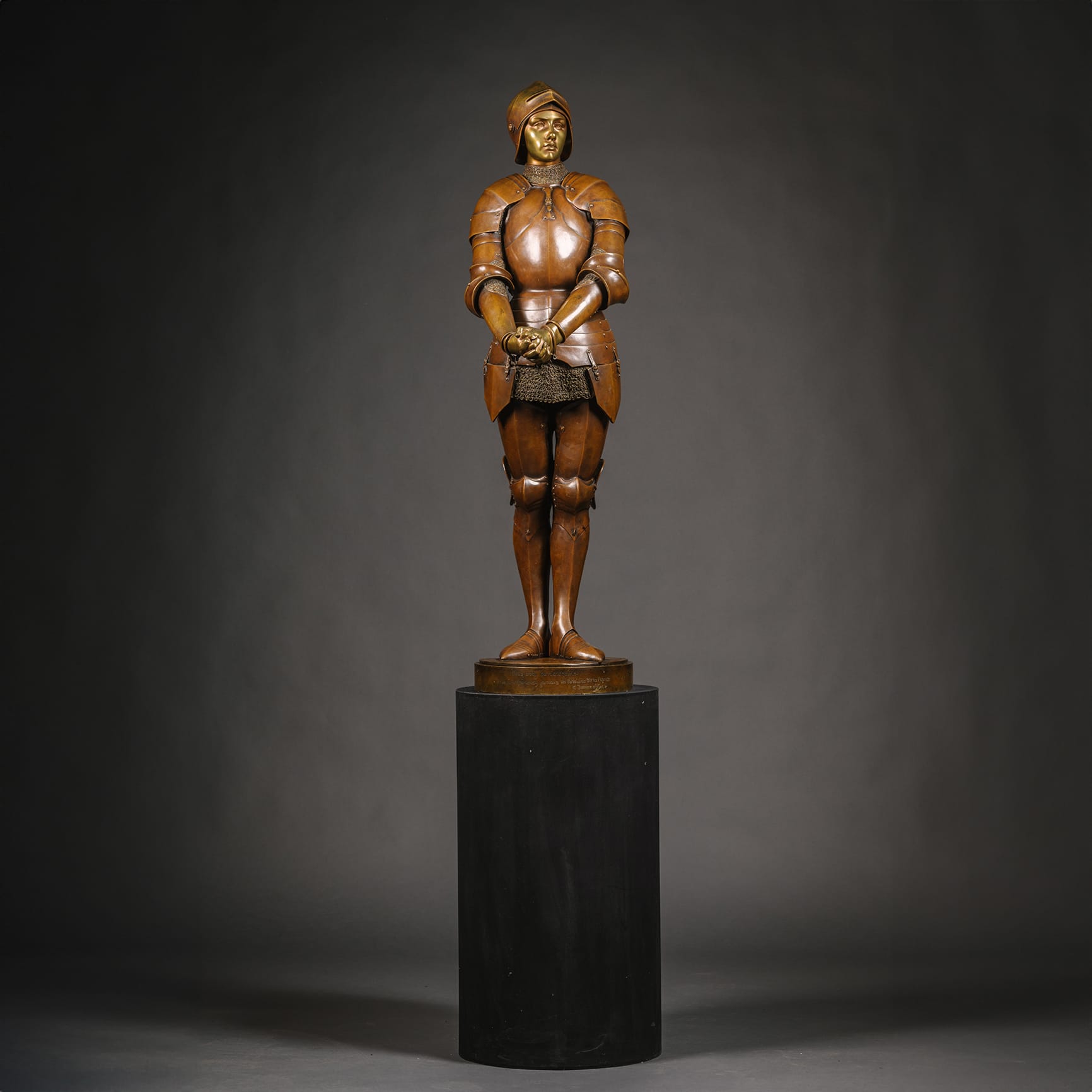
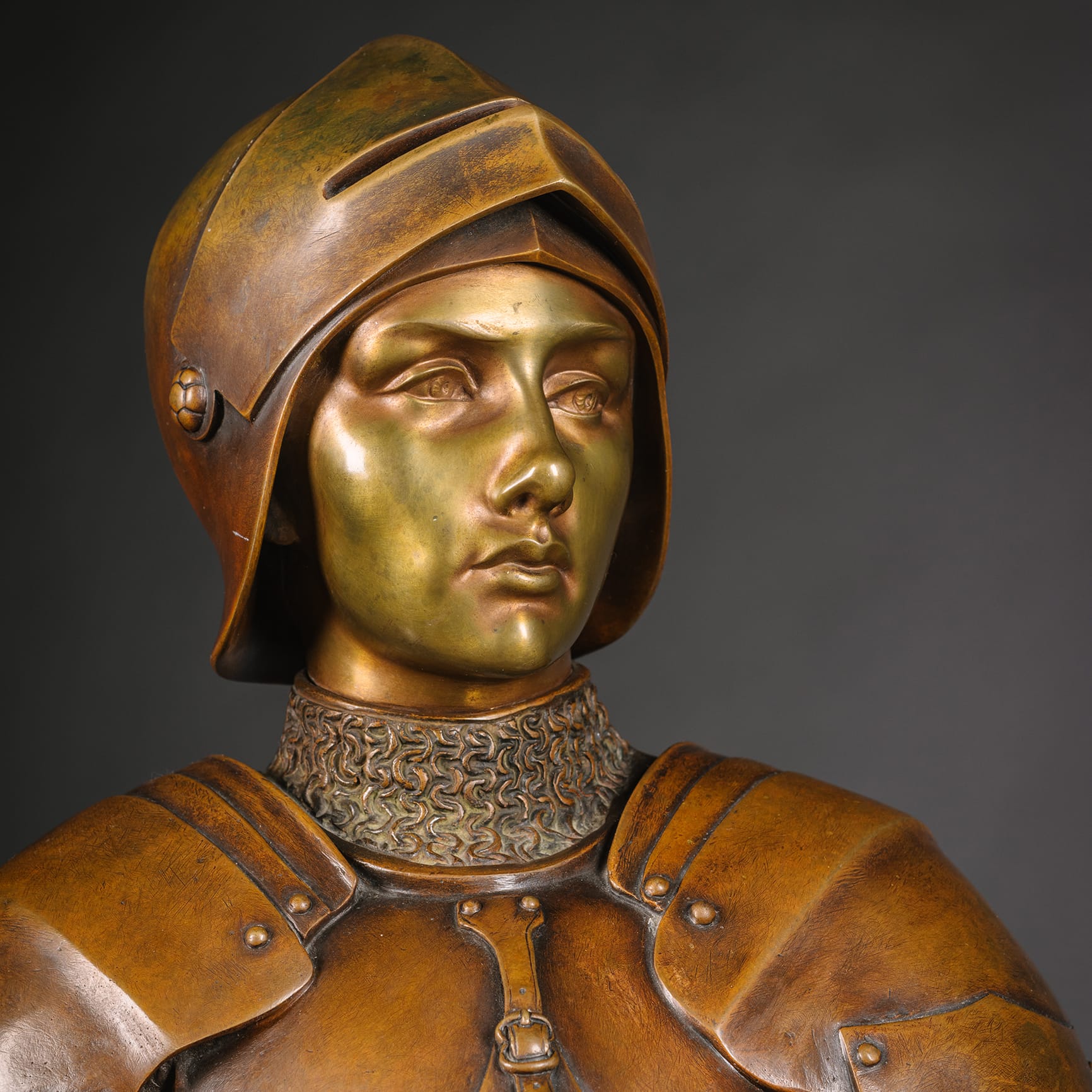
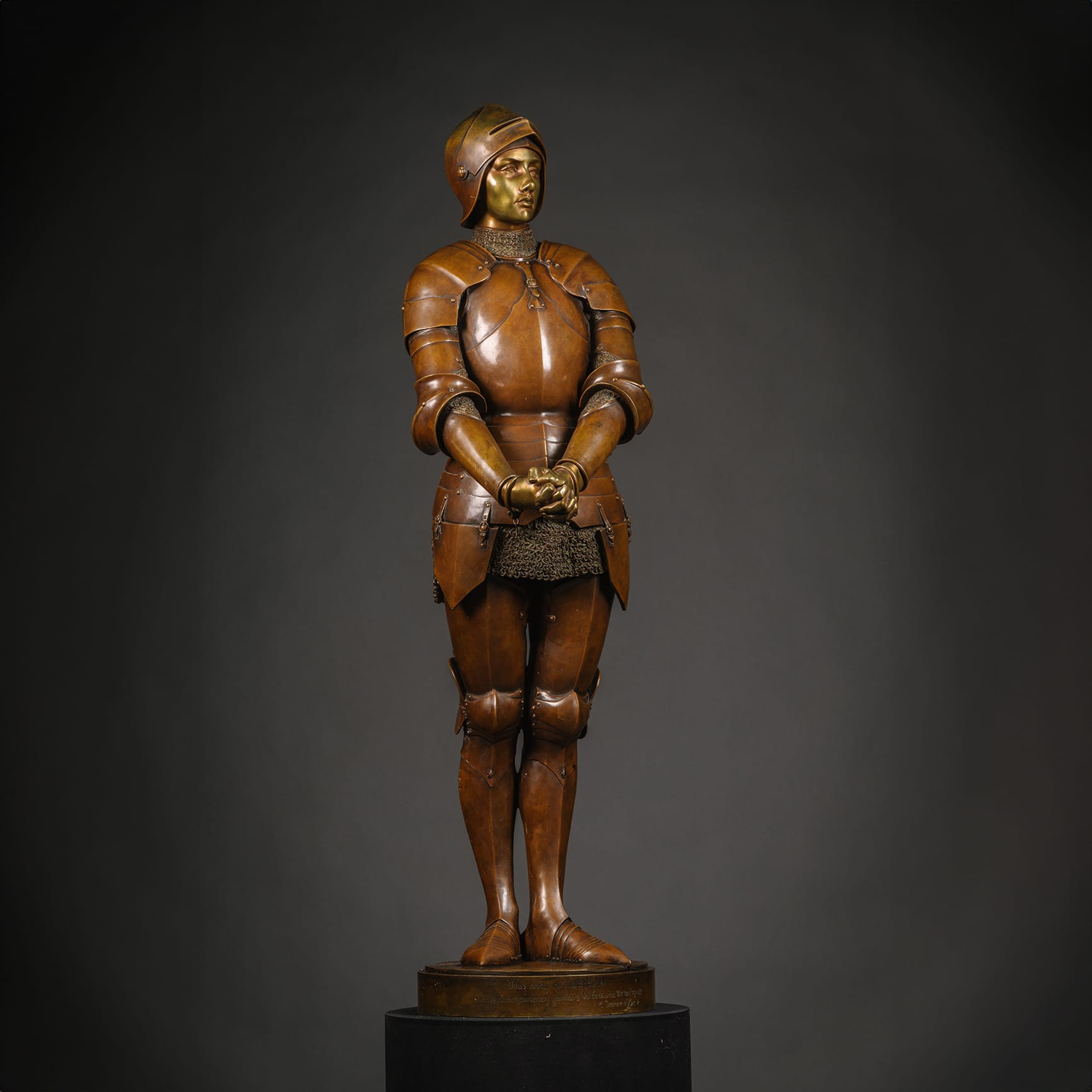
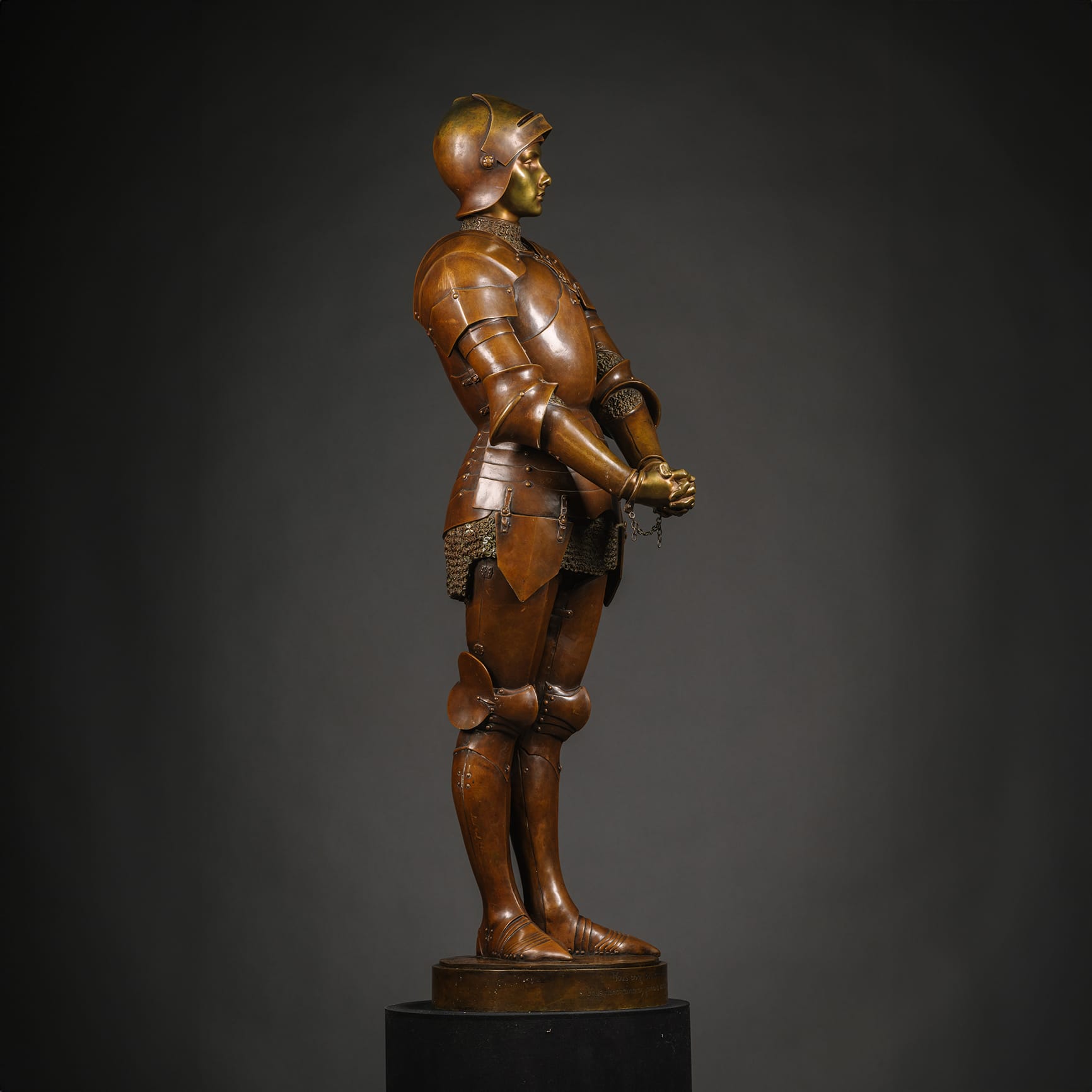
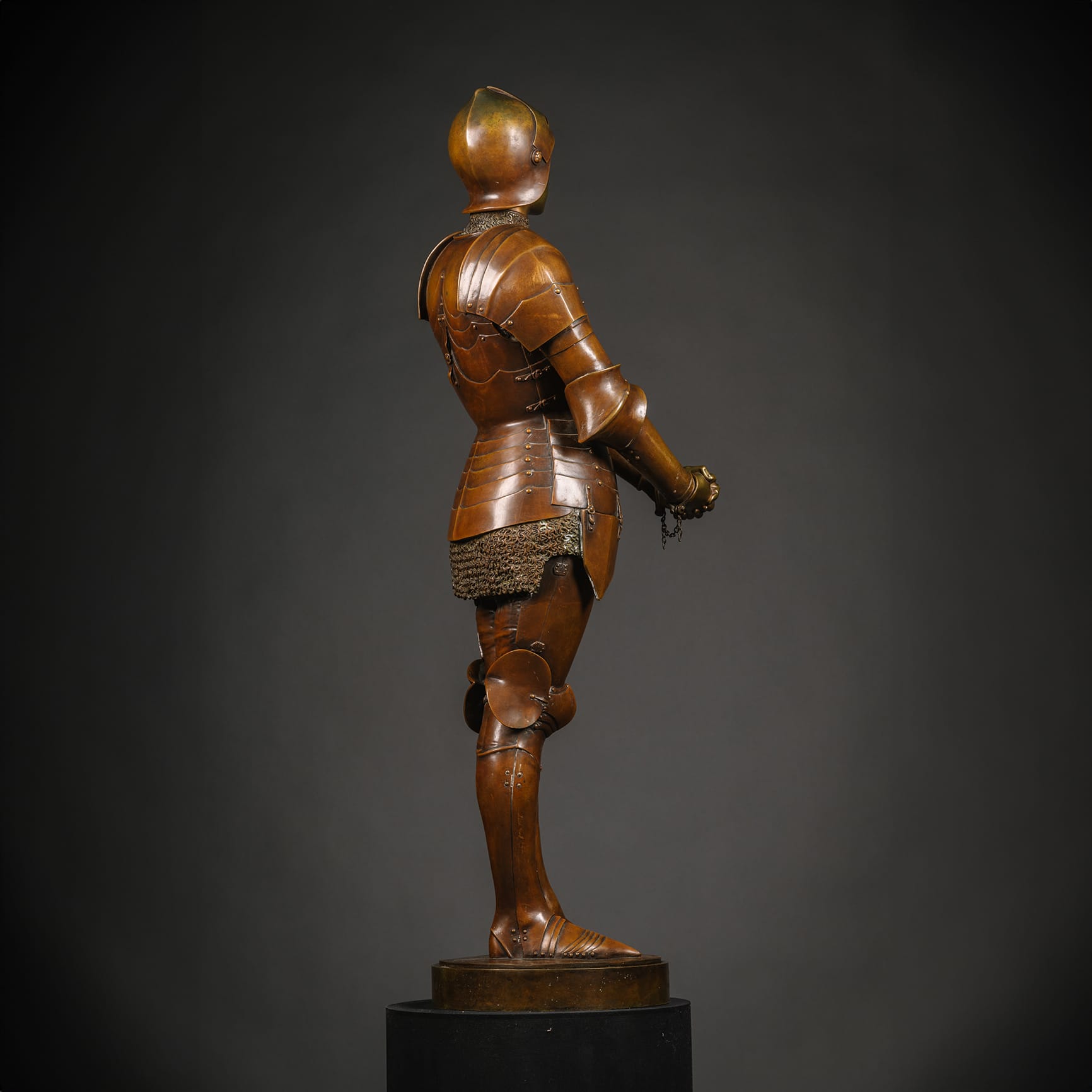
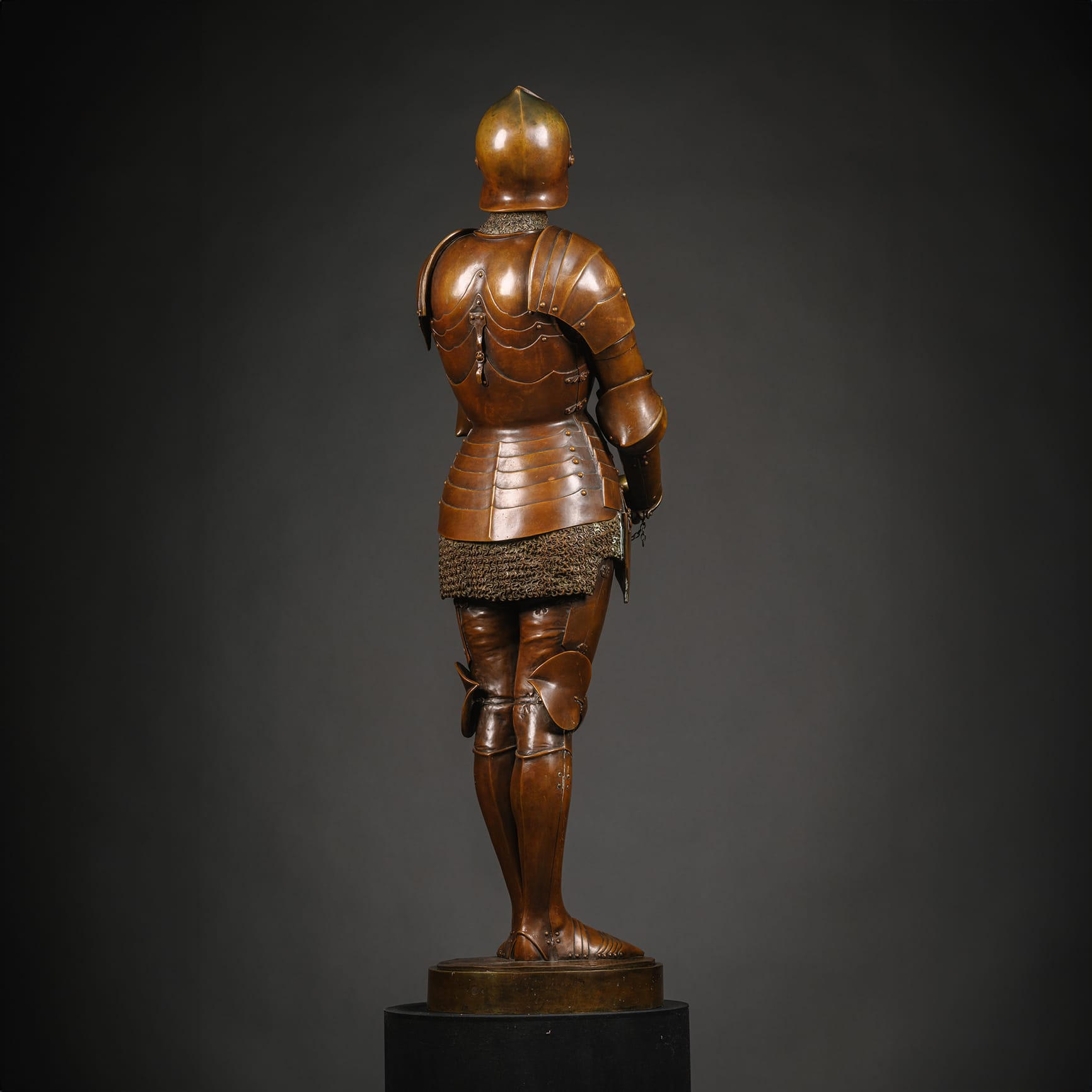
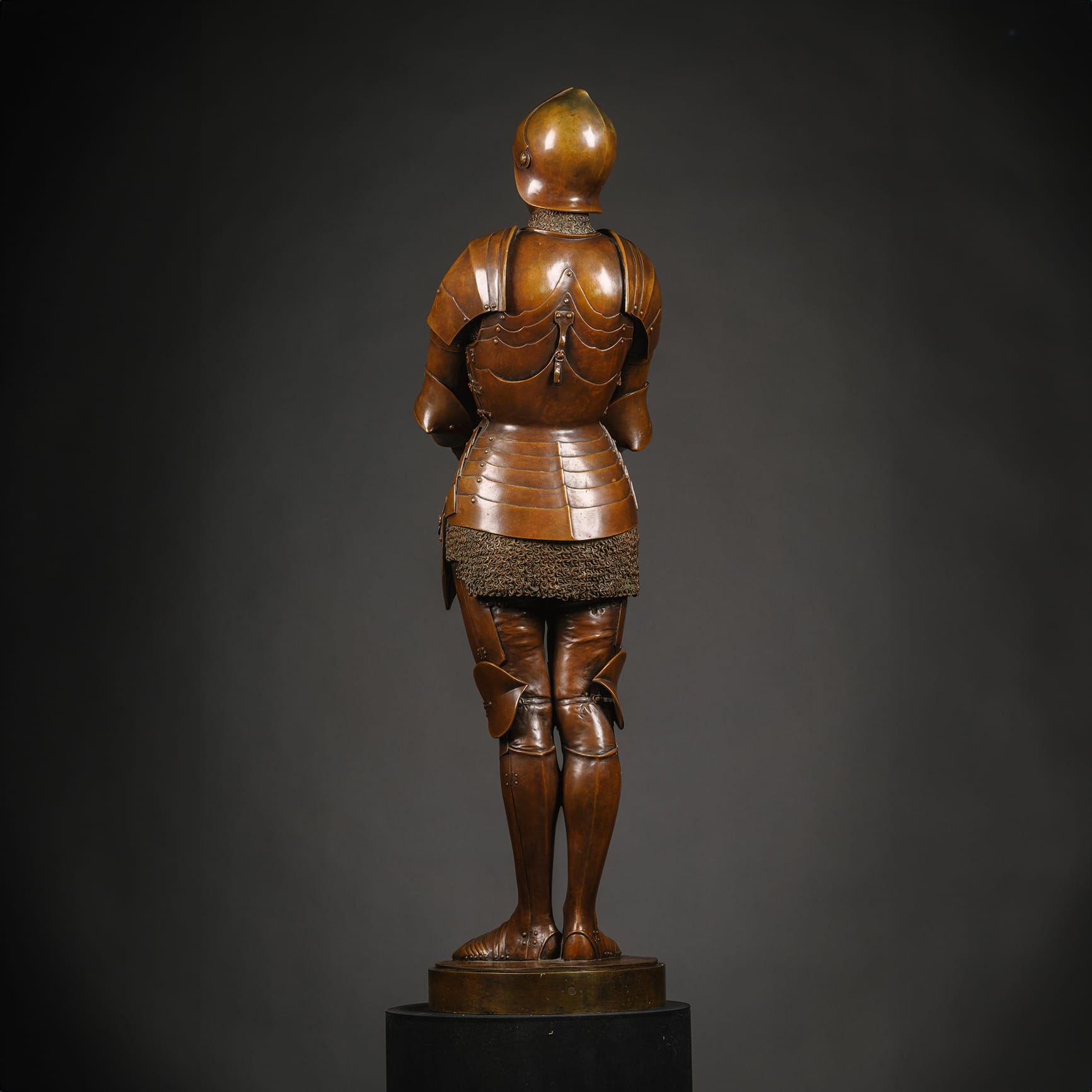
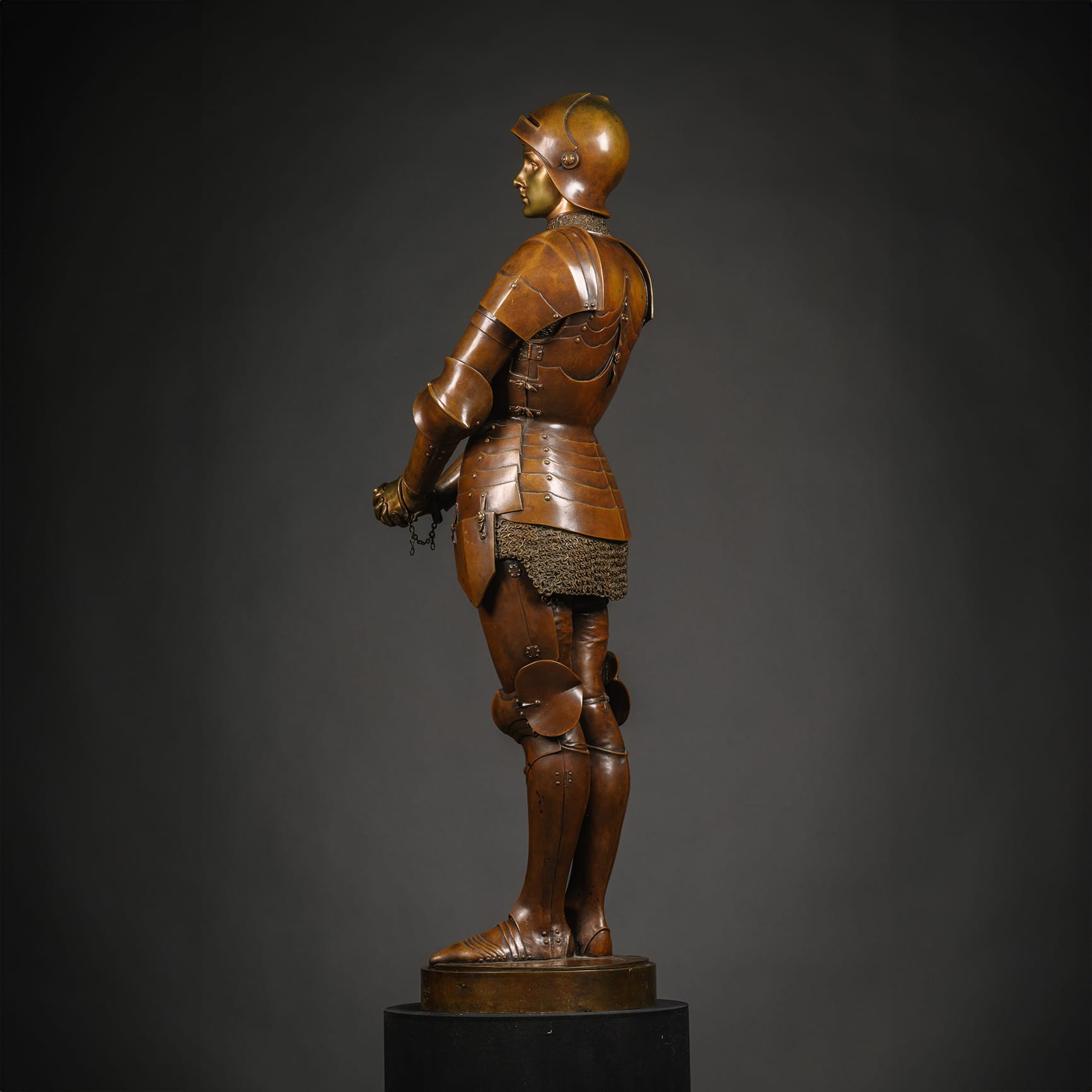
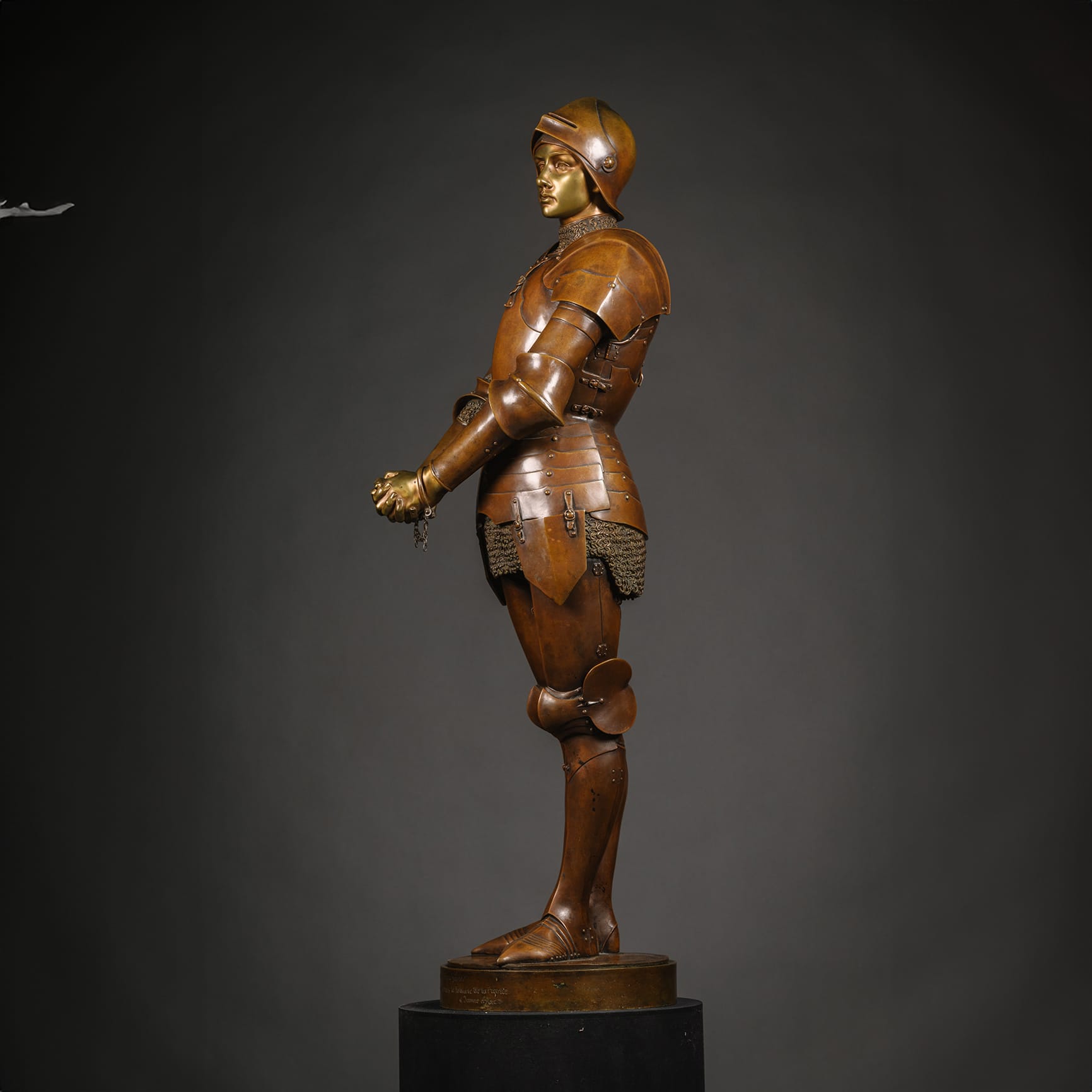
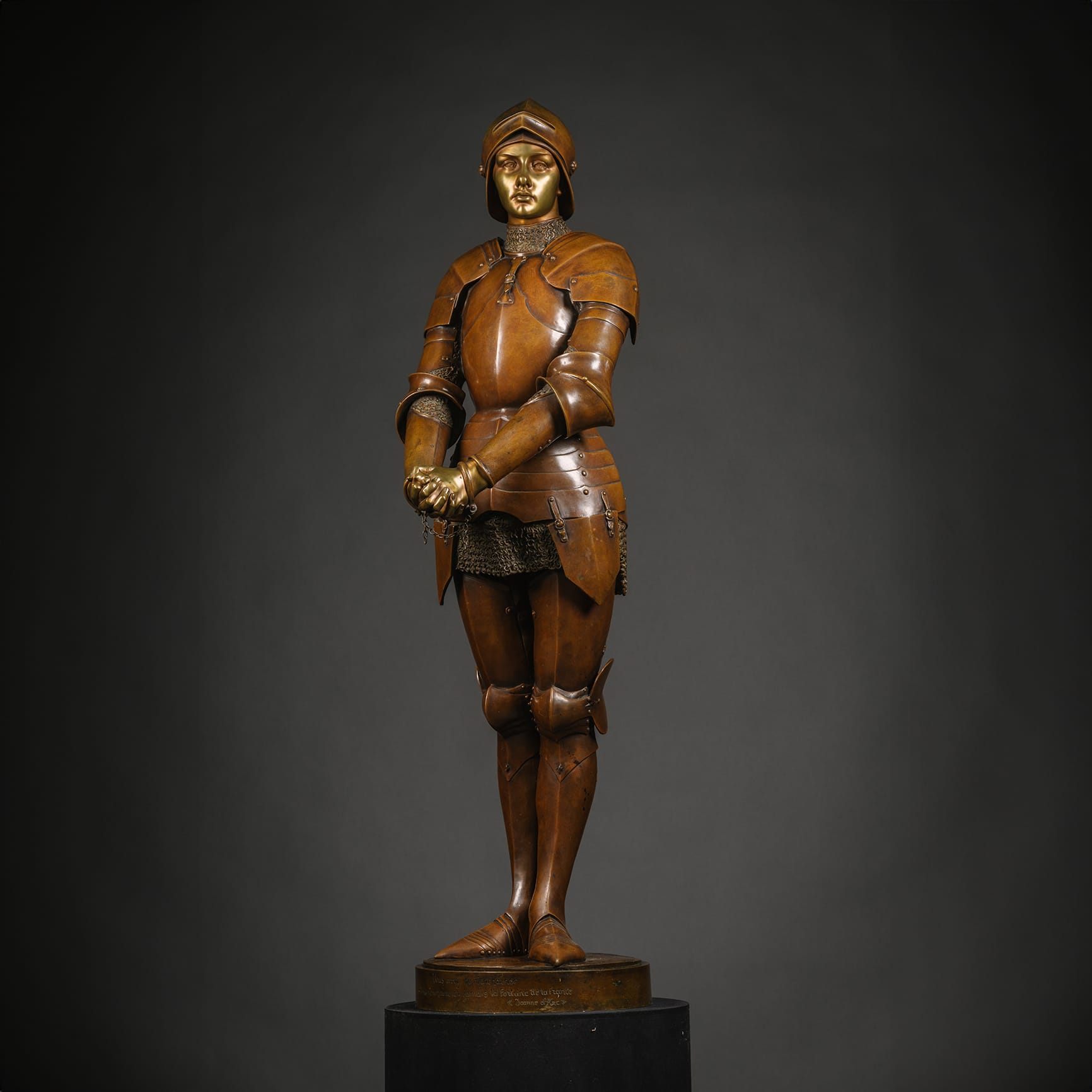
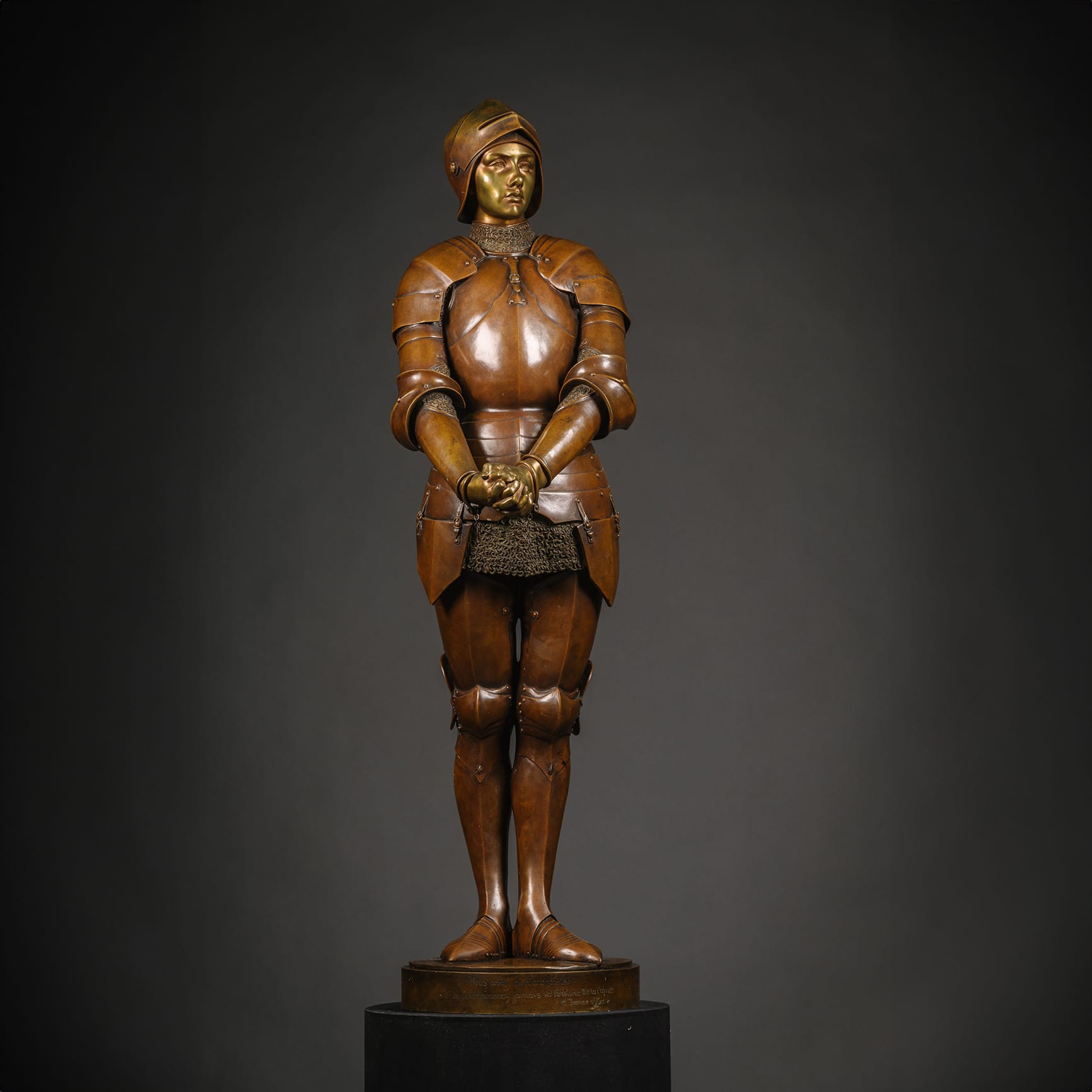
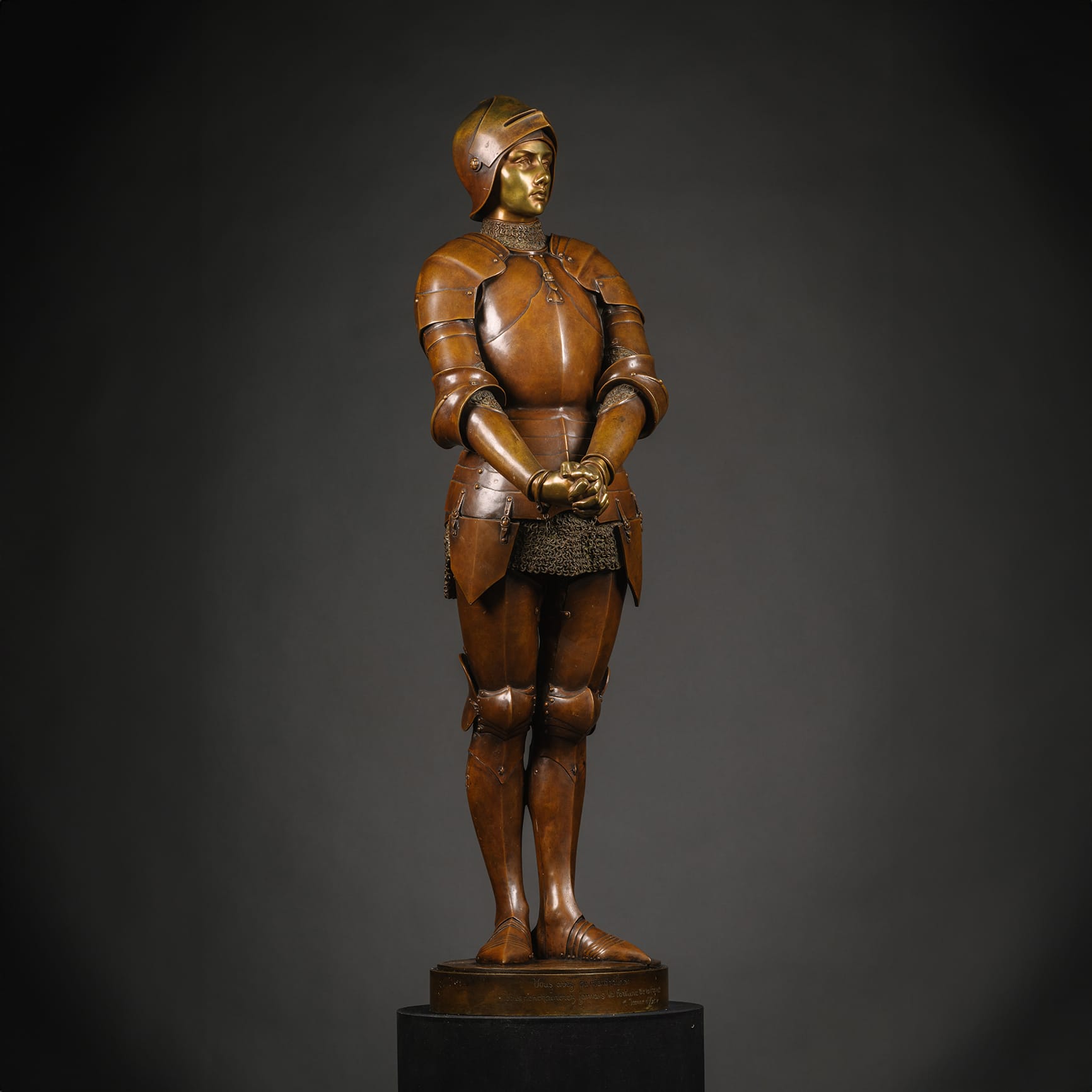
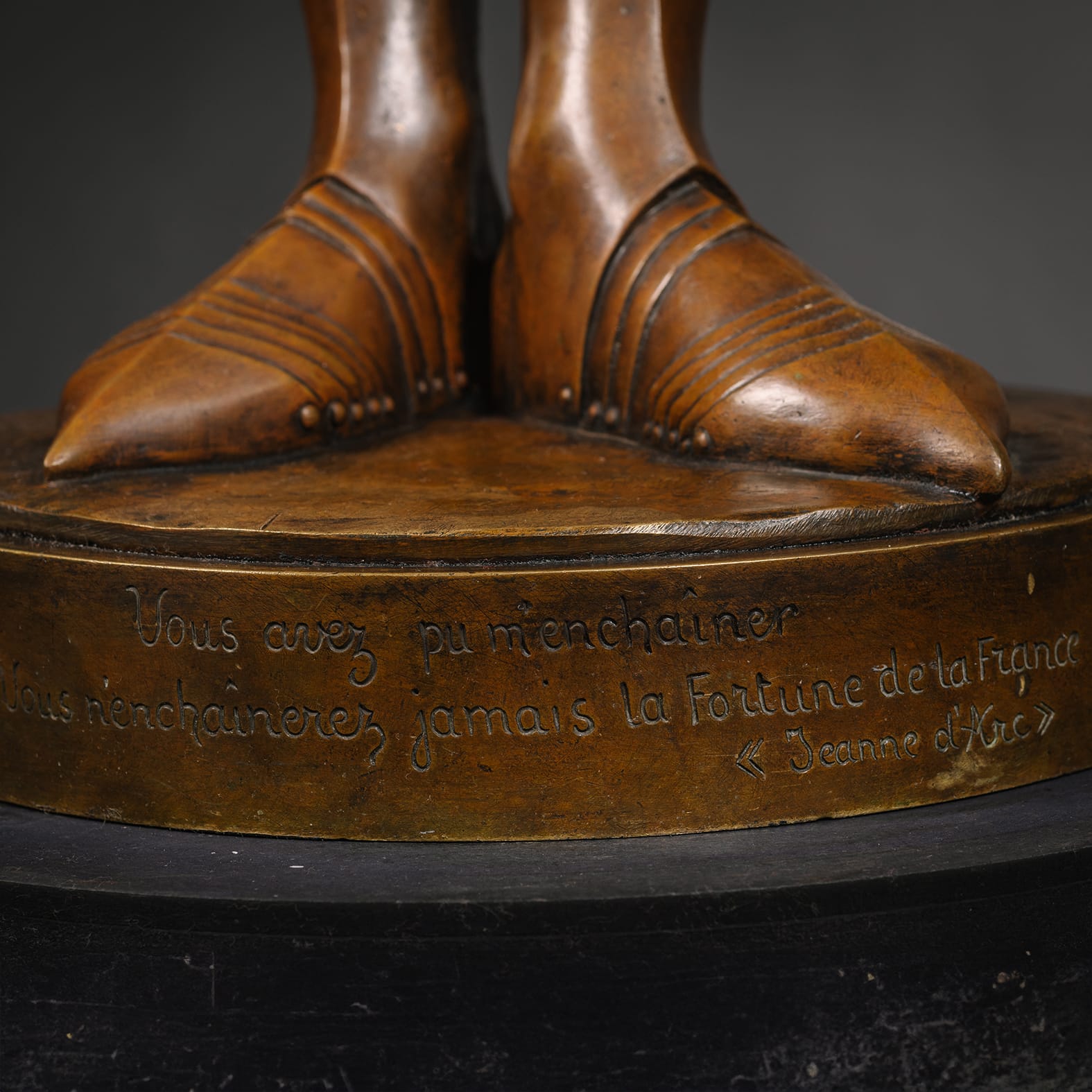
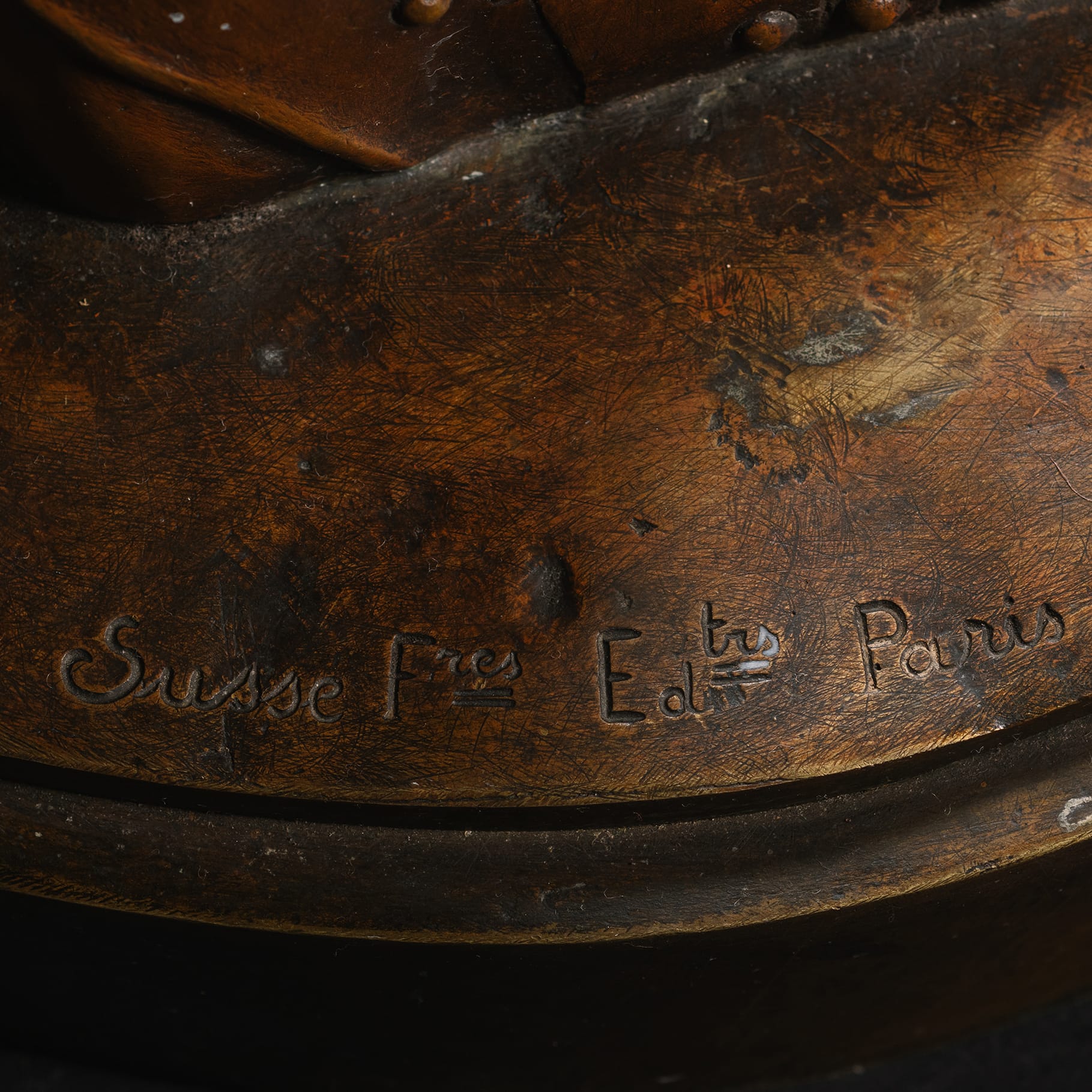
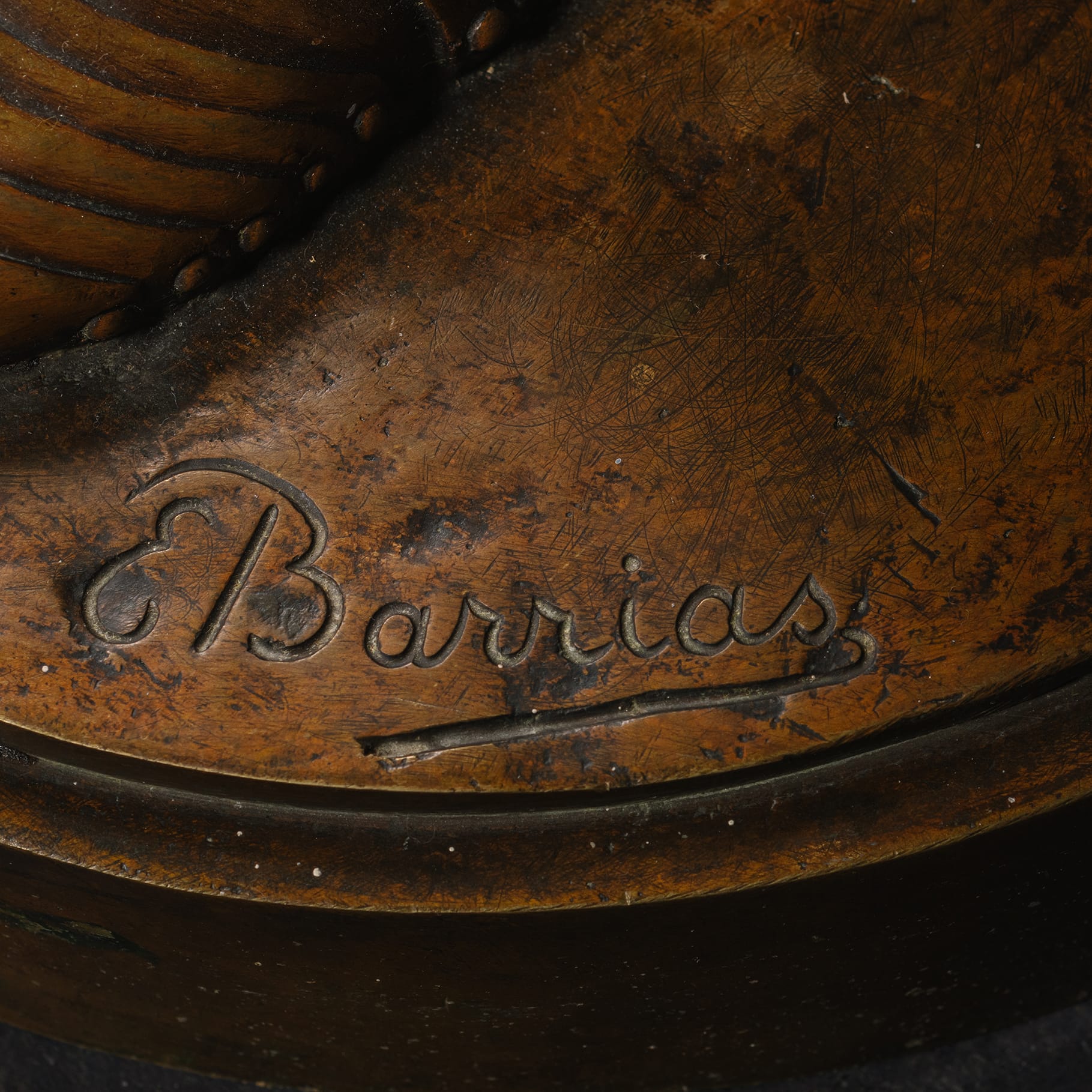

 Печать
Печать